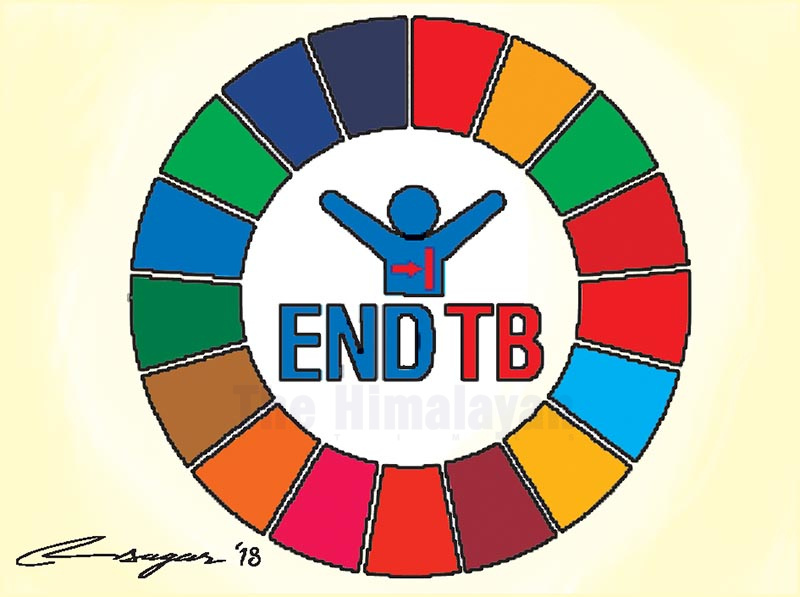TB patients continue to face medication barrier
Kathmandu, January 18
TB patients continue to experience barriers in access, diagnosis and completion of treatment.
Researchers said barriers to access health centres were long distance, poor road condition and costs associated with travelling.
Challenges in mitigating mortality associated with tuberculosis were barriers like access to health services, diagnosis and adherence to treatment, researchers said.
A research was conducted by Dr Sujan Babu Marahatta working at Manmohan Memorial Institute of Health Sciences and his team in six districts of Tarai, hilly and mountain regions — Tanahun, Kaski, Parsa, Nawalparasi, Mustang and Kathmandu.
The researchers found that scarcity of staff at health facilities was a major problem in Nepal. This was echoed by respondents in all the six districts.
The study was conducted among health service providers, traditional healers, tuberculosis patients and community members.
The participants said irregularity of staffers, office hours and absence of staffers at health facilities were major impediments for patients.
The research titled ‘Barriers in Access, Diagnosis and Treatment Completion for Tuberculosis Patients in Central and Western Nepal: A Qualitative Study Among Patients, Community Members and Health Care Workers’ was published in Plus One Journal.
The researchers have pointed out that health centres often lacked enough lab staffers and reagents to detect new cases of TB. Early diagnosis of TB was hindered by lack of trained health staffers for using equipment, lack of equipment and irregular presence of health workers, according to researchers. Lack of staff, who could detect, treat and dispense medicine for tuberculosis was a major problem resulting in missed opportunity for diagnosis, delayed initiation of the medicine, inadequate counselling and poor adherence to medication, according to the report.
“One of the most pronounced factors from all the respondents in all districts was the distance to the health centre. Coupled with the geographical barriers to access, for instance, uphill route, forested path and rivers/springs along the path towards health centres discouraged patients from accessing health services,” said Dr Marahatta. “The main objective of this study was to explore factors affecting access to health services, diagnosis and treatment completion for TB patients in central and western Nepal,” added Dr Marahatta.
The research team also suggested enhancing efficiency of health facilities by adequately mobilising required human resources and by ensuring provision of equipment for diagnosis of TB and medications for TB treatment.
“Health centres can be improved by ensuring skilled human resources and equipment for diagnosis, increasing awareness and collaborating with traditional healers.
Health services utilisation can be enhanced by compensating direct and indirect costs, including modification in the current DOTS strategy by providing medicine for longer term under the supervision of family member or a community member utilising the elements of community engagement,” researchers suggested.
TB is caused by bacteria — mycobacterium tuberculosis that most often affects the lungs.
TB spreads from person to person through the air. When patients cough, sneeze or spit, they propel the TB germs into the air.
Around 45,000 new TB cases are added each year. As per National Tuberculosis Centre, an estimated 32,000 cases have been registered under National Tuberculosis Programme, each year.






